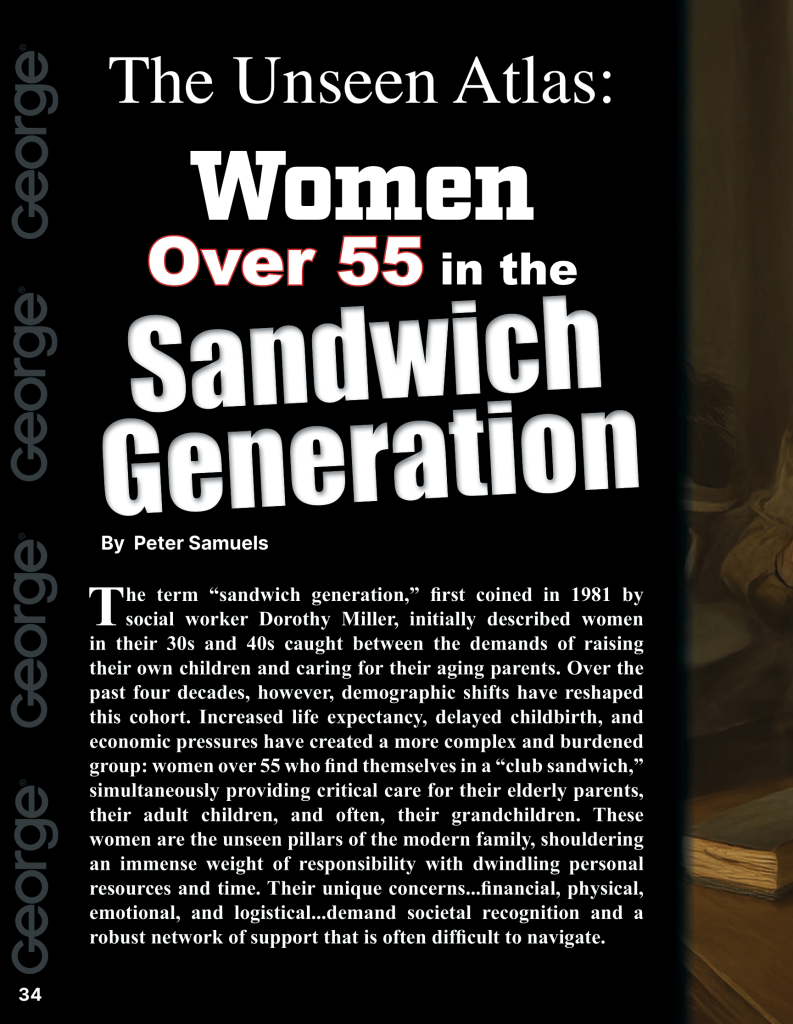A Lifeline of Support: What Help is Offered?
While the challenges are immense, a patchwork of resources exists to support these caregivers. The primary difficulty often lies in knowing these resources exist and how to connect with them. Help can be categorized into several key areas.
1. Government and Community Programs
-
The National Family Caregiver Support Program (NFCSP): Enacted under the Older Americans Act, the NFCSP provides grants to states to fund a range of supports for family caregivers. Administered locally through Area Agencies on Aging (AAAs), these services can include:
-
-
Information and Assistance: Connecting caregivers to local services.
-
Counseling and Support Groups: Providing emotional and peer support.
-
Respite Care: Offering temporary relief to give caregivers a much-needed break. This is one of the most requested and impactful services.
-
Caregiver Training: Educating caregivers on topics like medication management, disease-specific care, and stress reduction.
-
Area Agencies on Aging (AAAs): There are over 600 AAAs across the United States. They are the first and best point of contact for anyone seeking elder care resources. They act as a local hub, providing information on everything from meal delivery services (like Meals on Wheels) to transportation, in-home care options, and senior centers.
-
Medicaid Waivers: For parents with low income and assets, Medicaid can be a crucial resource. Many states offer Home and Community-Based Services (HCBS) waivers. These programs allow individuals who would otherwise qualify for nursing home care to receive services…such as personal care aides, adult day health, and home modifications…in their own homes. Some states even have programs that allow family members to be paid as caregivers.
-
Kinship Care Programs: For women raising grandchildren, states offer “kinship care” or “guardianship” support. This can include financial assistance (sometimes through Temporary Assistance for Needy Families – TANF), subsidized childcare, and help navigating the legal system to formalize custody.
-
The Family and Medical Leave Act (FMLA): This federal law allows eligible employees to take up to 12 weeks of unpaid, job-protected leave per year to care for a parent, spouse, or child with a serious health condition. While crucial for job security, its unpaid nature makes it financially untenable for many.
2. Non-Profit Organizations and Advocacy Groups
Numerous non-profits are dedicated to the cause of caregiving and offer a wealth of information, tools, and support.
-
AARP (American Association of Retired Persons): AARP has extensive resources for caregivers, including a dedicated Caregiving Resource Center on its website, a toll-free support line, and local community events.
-
Family Caregiver Alliance (FCA): The FCA offers comprehensive information through fact sheets, webinars, and research reports. Their Family Care Navigator tool helps caregivers locate public, nonprofit, and private programs and services in their state.
-
Alzheimer’s Association: For those caring for parents with dementia, this organization is indispensable. They offer a 24/7 helpline, local chapters with support groups, and detailed information on managing the disease’s progression.
3. Technology and Professional Services
-
Geriatric Care Managers: These are typically licensed nurses or social workers who specialize in geriatrics. For a fee, they can assess a senior’s needs, create a care plan, and coordinate all aspects of their care. They can be an invaluable resource for navigating the healthcare system and finding quality local services, saving the caregiver immense time and stress.
-
Elder Law Attorneys and Financial Planners: Seeking professional advice is critical. An elder law attorney can help with essential legal documents (wills, trusts, Power of Attorney), while a financial planner who specializes in elder care can help families structure their finances to pay for long-term care without bankrupting the caregiver.
How to Obtain Help: A Practical Guide
Knowing that help exists is one thing; accessing it is another. For an overwhelmed caregiver, the process can feel like another full-time job. A step-by-step approach can make it more manageable.
Step 1: Acknowledge the Need and Conduct a Self-Assessment.
The first and most crucial step is for the caregiver to admit she cannot do it all alone. This is not a sign of failure but of strength and strategic thinking. She should take a frank inventory of her own needs: Is the primary need financial help, a physical break (respite), emotional support, or logistical assistance?
Step 2: Start with the Eldercare Locator.
This is the single best starting point. The Eldercare Locator is a public service of the U.S. Administration on Aging. By calling their toll-free number (1-800-677-1116) or visiting their website, caregivers can be connected directly to their local Area Agency on Aging (AAA).
Step 3: Convene a Family Meeting.
Caregiving should be a family responsibility, not a solo mission. The primary caregiver should schedule a formal meeting with siblings, her partner, and other relevant family members. The goal is not to assign blame but to present the reality of the situation and delegate specific, concrete tasks. One sibling might take over managing finances and paying bills, another could be responsible for scheduling doctor’s appointments, and a third could commit to providing respite one weekend a month.
Step 4: Explore All Financial Avenues.
Investigate eligibility for all potential benefits. This includes checking the parent’s long-term care insurance policy (if one exists), applying for Medicaid if they qualify, and researching veteran’s benefits through the Department of Veterans Affairs. Contact the local Social Security office to ensure both parents and grandchildren are receiving all benefits they are entitled to.
Step 5: Build a Formal and Informal Support Network.
Do not underestimate the power of community. The caregiver should actively seek out a local or online caregiver support group. Sharing experiences with others in the same situation is incredibly validating and a source of practical tips. She should also learn to accept help from her informal network…friends, neighbors, and members of her faith community. When someone says, “Let me know if I can help,” she should be ready with a specific request: “Could you pick up some groceries for me on Tuesday?” or “Could you sit with Mom for an hour so I can take a walk?”
Step 6: Prioritize Self-Care with Intentionality.
Self-care cannot be an afterthought; it must be scheduled. This means blocking out time in the calendar, even if it’s just 15-30 minutes a day, for an activity that is purely for her: reading a book, meditating, walking, or talking to a friend. Accessing respite care is key to making this possible. It is not a luxury; it is a vital component of sustainable caregiving.
The Quiet Heroines of the Club Sandwich Generation
The women over 55 in the “club sandwich” generation are a demographic of quiet heroines. They are the social safety net, the economic buffer, and the emotional core for multiple generations. Yet their labor is largely invisible, and their well-being is often sacrificed. Society must move beyond mere acknowledgment to creating systemic supports that value and sustain these caregivers. This includes expanding paid family leave, increasing funding for the National Family Caregiver Support Program, simplifying access to benefits, and promoting workplace flexibility.
For the women themselves, the path forward begins with a radical act: giving themselves permission to seek and accept help. They are the Atlas holding up the family world. By finding and using the available lifelines, they can learn to share that weight, ensuring they not only care for their loved ones but also preserve their own health, dignity, and future.
References and Citations:
-
-
AARP and National Alliance for Caregiving (NAC). (2020). Caregiving in the U.S. 2020. AARP. https://www.aarp.org/ppi/info-2020/caregiving-in-the-united-states.html
-
AARP Public Policy Institute. (2021). Caregivers’ Out-of-Pocket Costs Rose to $7,242 in 2021. https://www.aarp.org/ppi/info-2023/family-caregiving-out-of-pocket-costs.html
-
American Psychological Association. (2020). Caregiver Stress and Burnout. https://www.apa.org/topics/caregiving/stress-burnout
-
Family Caregiver Alliance (FCA). (n.d.). Family Care Navigator. https://www.caregiver.org/connecting-caregivers/fca-carenav/
-
Miller, D. (1981). The ‘sandwich’ generation: Adult children of the aging. Social Work, 26(5), 419–423.
-
National Alliance for Caregiving (NAC). (n.d.). Resources for Caregivers. https://www.caregiving.org/resources/
-
Pew Research Center. (2013). The Sandwich Generation: Rising Financial Burdens for Middle-Aged Americans. https://www.pewresearch.org/social-trends/2013/01/30/the-sandwich-generation/
-
U.S. Administration on Aging. (n.d.). Eldercare Locator. https://eldercare.acl.gov/
-
U.S. Department of Health and Human Services, Administration for Community Living. (n.d.). National Family Caregiver Support Program. https://acl.gov/programs/support-caregivers/national-family-caregiver-support-program








![[GOOD PRESS] ON[GOOD PRESS] ON](https://georgemagazine.com/wp-content/uploads/2024/08/16389056566437433941_2048-300x300.jpeg)


